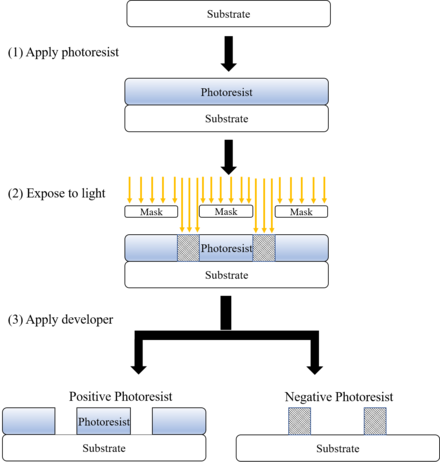A photoresist is a light-sensitive substance that is used to generate a patterned coating on a surface in procedures such as photolithography and photoengraving. In the electronic sector, this process is critical. The procedure begins with the application of a light-sensitive organic substance to a substrate. A patterned mask is then put to the surface to block light, exposing only the uncovered parts of the material to light.
The surface is subsequently treated with a solvent known as a developer. In the case of a positive photoresist, light degrades the photosensitive material, and the developer dissolves away the light-exposed regions, leaving behind a coating where the mask was put. In the case of a negative photoresist, light strengthens (either polymerizes or cross-links) the photosensitive material, and the developer dissolves away only the regions that were not exposed to light, leaving a coating in areas where the mask was not put.
Positive: light will weaken the resist, and create a hole
Negative: light will toughen the resist and create an etch resistant mask.
Interested to this product? Contact Us Now

